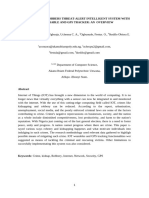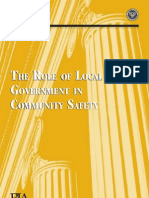0% found this document useful (0 votes)
5 views4 pagesResearch & Problem Identification
The document discusses the concept of a 'smart city', which integrates urban communications and IoT devices to enhance city management and improve residents' quality of life. It identifies various types of crime and challenges within the justice system, while highlighting successful crime prevention strategies from countries like Denmark, Japan, and Iceland. The document proposes solutions for creating a safer smart city, including improved surveillance, faster police response, and increased public awareness through technology and community programs.
Uploaded by
nastademanova58Copyright
© © All Rights Reserved
We take content rights seriously. If you suspect this is your content, claim it here.
Available Formats
Download as DOCX, PDF, TXT or read online on Scribd
0% found this document useful (0 votes)
5 views4 pagesResearch & Problem Identification
The document discusses the concept of a 'smart city', which integrates urban communications and IoT devices to enhance city management and improve residents' quality of life. It identifies various types of crime and challenges within the justice system, while highlighting successful crime prevention strategies from countries like Denmark, Japan, and Iceland. The document proposes solutions for creating a safer smart city, including improved surveillance, faster police response, and increased public awareness through technology and community programs.
Uploaded by
nastademanova58Copyright
© © All Rights Reserved
We take content rights seriously. If you suspect this is your content, claim it here.
Available Formats
Download as DOCX, PDF, TXT or read online on Scribd
/ 4






















































































